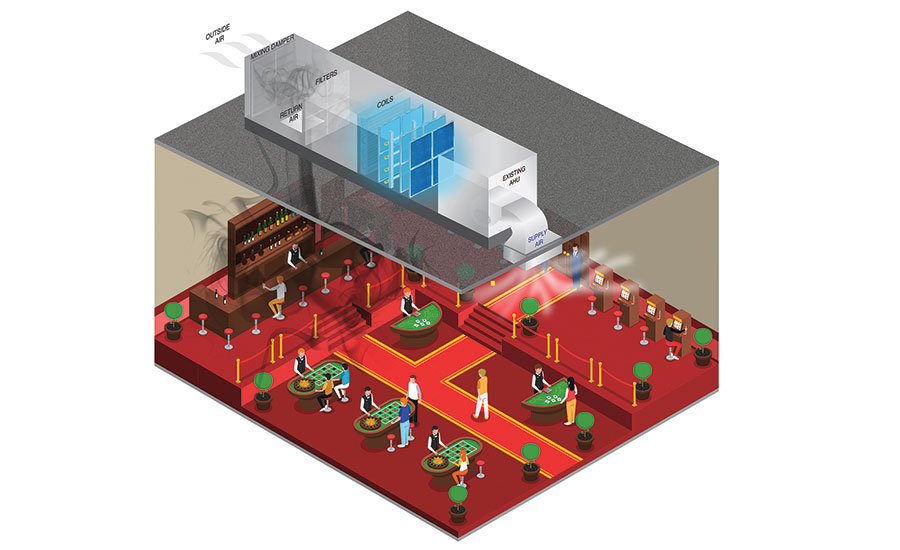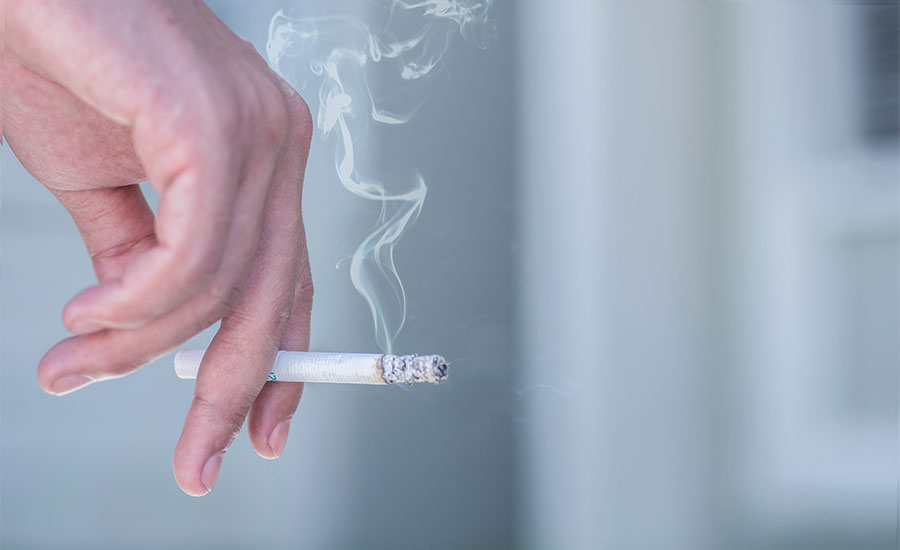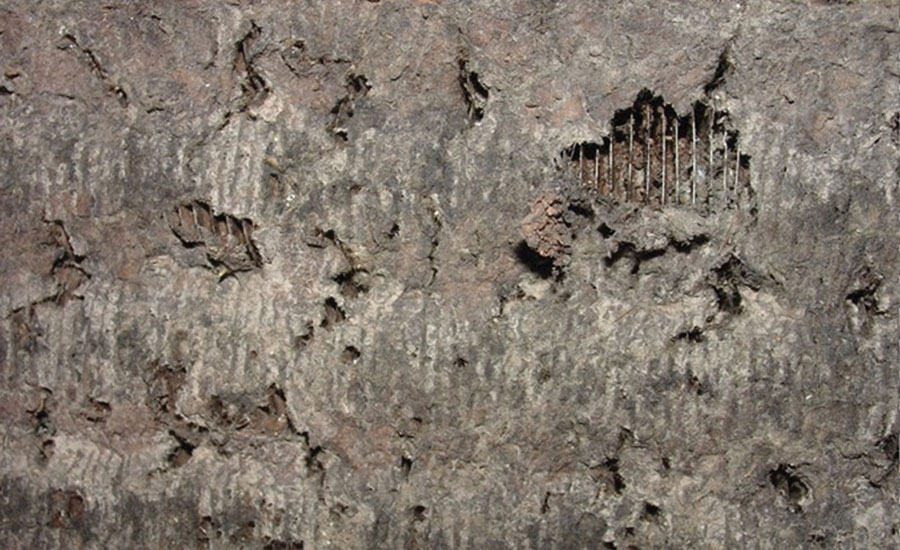An indoor air quality initiative makes sure everyone within a casino resort is on the same page when it comes to making the atmosphere more healthy and comfortable for both guests and employees. Here is how to get one started

There is a long-standing perception that casino gamblers smoke at a higher percentage than the average population.
A recent University of Nevada Reno study has thrown some cold water on this assumption when it revealed that the percentage of gamblers who smoke at tourist destination casinos is almost identical to the overall percentage of smokers in the U.S., which is currently 21 percent. Many casinos across the country continue to cater to this 21 percent and allow smoking within gaming facilities; which begs the question what is the casino industry doing to address the air quality needs of the remaining 79 percent of its customers?

Gaming operations are further challenged by modern air quality issues such as adjacent smoking and nonsmoking areas, the rise of vaping and now guests indulging in recreational marijuana.
Each day a guest breathes about 2,000 gallons of air and expects healthy air. Better indoor air quality means happier customers, longer stays and increased revenues. Embracing indoor air quality as a key amenity is the start of improving what your guests breathe.
FINDING INITIATIVE
It’s time for casino facilities to get proactive when it comes to air quality. A good way to start such an endeavor is by creating an indoor air quality initiative (IAQI) that strategically deals with these indoor air quality issues. Since air quality issues effect the entire property, stakeholders in the IAQI should be executives from every department within the facility.
An IAQI should begin with the creation of a “political will” that states indoor air quality is an important amenity for guests and team members, and that the resort will invest to improve it.
The next step involves understanding the air quality problems and needs throughout the property. This process of discovery should not be rushed, and everything uncovered must be recorded.

Don’t neglect this step… it will guide the rest of the process for an IAQI. Items and actions to consider here include:
- Review and update any changes in your facilities that affect indoor air quality;
- Reevaluate the current air treatment equipment maintenance;
- Consider a subcontractor for maintenance of the HVAC and indoor air treatment system;
- Consult a third party for a “test and balance” to make sure the HVAC is working the way it should be;
- Budget for indoor air quality improvements such as new technologies that are now available to reduce secondhand smoke;
- Consider indoor air quality as an “expendable amenity” that needs to be budgeted for on a per-guest, per-year basis; and
- Investigate how energy recovery air purification systems can provide a better ROI on your investment.
Finally, it helps to come up with a list of air quality goals for the IAQI such as:
- Offering the best possible indoor quality air for guests and team members;
- Adding better indoor air quality to an existing sustainability program;
- Setting a goal to reduce secondhand smoke and odor complaints by 50 percent;
- Offering in-room air purifiers for guests with respiratory issues;
- Becoming recognized as the property with the best air quality;
- Devising a quick response plan for nuisance odors in public areas and hotel rooms; and
- Writing a marketing plan to include indoor air quality as an amenity.
EVALUATING THE SITUATION
With discovery and goals squared away, the next step in the IAQI process is to evaluate in-place and replacement air quality equipment solutions. Keep in mind indoor air quality is affected by particles, biological micro-organisms, odors and gaseous compounds. Research all air treatment systems to confirm they remove the specific contaminants of your property to meet the goals set out in the IAQI. When it comes to the in-place air handling systems, question to ask and answer include:
- Status update: What is currently used? How is it performing?
- Coil cleaning: What is the maintenance on the existing cooling coils? Biofilm build up on the coils can degrade indoor air quality.
Topics and questions for new or replacement equipment include:
- Efficiency: Is the system energy efficient? Can it retrofit to an existing system?
- Reliability: Call references. Has the air treatment system performed as advertised? How do the environmental factors affect its performance?
- Test data: Is there scientific data to back up vendor claims? Who did the research?
- Durability: How long will it last? Will the system break down and require costly repairs?
- Simplicity: Is it easy to understand, install and maintain for the desired results?
- Health and safety: Are there any harmful byproducts?
- Maintainability: Can the system be maintained in-house or does it need a specialist? Does the system have to be calibrated often? What are the yearly maintenance costs?
- Acceptable return on investment (ROI): What is the energy cost savings if more air can be recirculated so outside air doesn’t need to be heated or cooled?
- Vendor follow-up: Will the vendor follow-up with testing of the system to validate results? Is this service included in the system purchase?
COST FACTORS
Improved indoor air quality sounds great, but can it also provide a return on the investment? Here are some cost calculations to consider for the IAQI:
- Energy saving: If an air treatment system can reduce the need for outside air from 100 percent to 50 percent, the energy savings can be significant. For example, with a $100,000 per month energy bill reduced by 15 percent, a savings of $180,000 can be realized toward a capital investment. ROI on a $250,000 air treatment system would be 17 months.
- Cost per guest per day: If investing in a $250,000 air treatment system for a property averaging 1,600 guests per day, the cost per guest for improved indoor air quality is: 1,500 guests per day average x 365 days per year = 547,500 guest visits per year. $250,000/547,500 guests per year = $0.46 per guest per day for improved air quality.
Consider air quality a “consumable amenity” at the low cost of $.0.46 per guest per day. For limited service hotels, amenities may cost less than $1 per guest per room. For luxury hotels, that cost may be more than $20 per guest room night. So why not bundle an air quality cost into resort fees such as internet access, bottled water, newspapers, cardio center access, pools and other perks?
GOING TO MARKET
Imagine the goals of the IAQI have been met and the new air treatment system is working great. Customers are happy. Revenues are up. Secondhand smoke and odor complaints are down. Success… but there is one more action to take.
Include the renewable indoor air quality amenity in the marketing plan. Promote indoor air quality just like beautiful rooms, great gaming, fine restaurants and exciting nightlife. Emphasize information about superior air quality in conference and meeting proposals.
Also, don’t forget to re-evaluate your indoor air quality every six months. Are the results as good as when the air system was first commissioned? Review maintenance costs for accuracy. Properties can have improved air quality, save money on energy and realize a great ROI.
By reenergizing indoor air quality through an IAQI program, casino operators can better engage and retain the 79 percent of their guests who are non-smoking, while keeping the other 21 percent of its customer base happy as well.